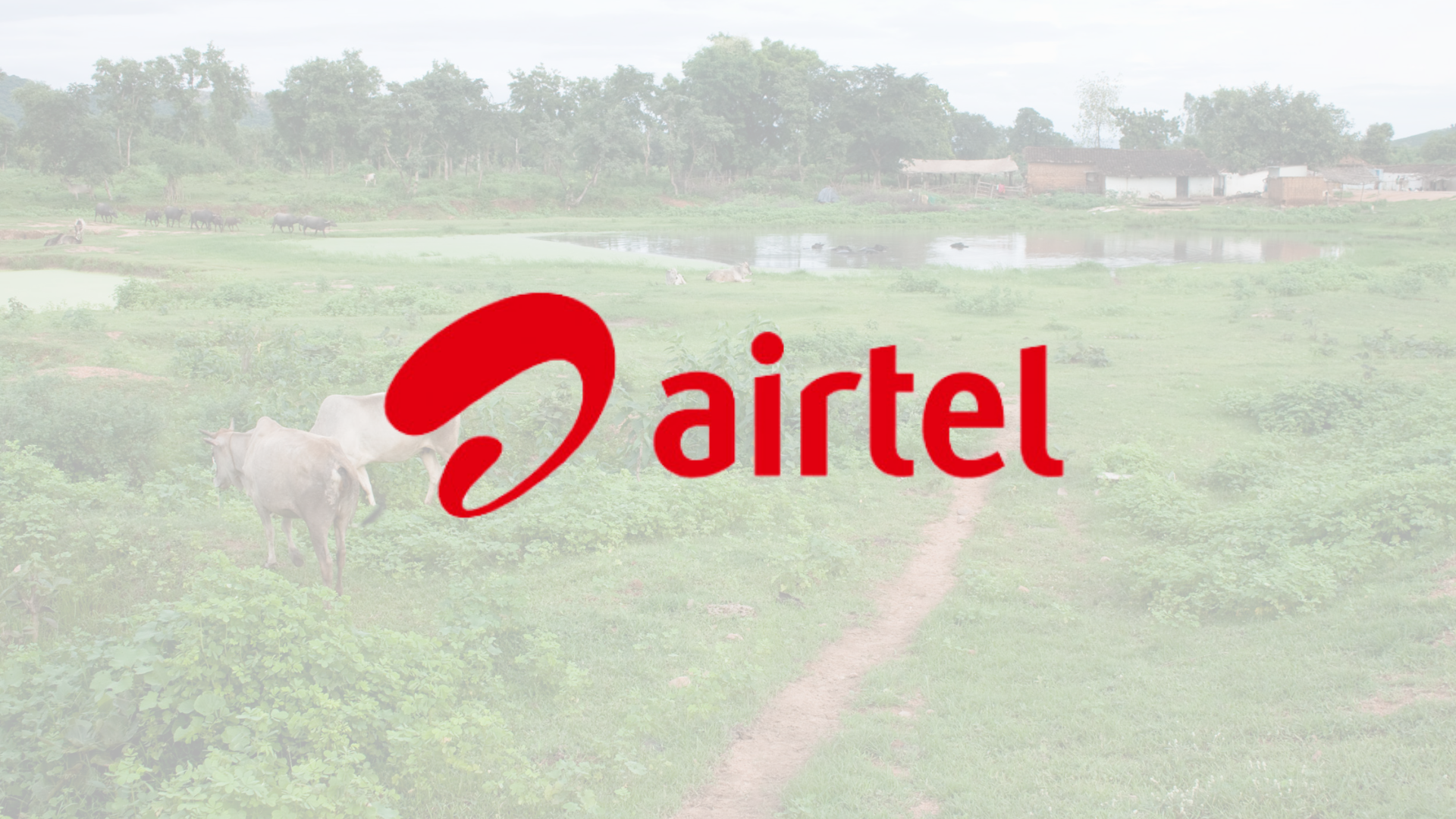In the rapidly evolving landscape of telecommunications, the shift from 4G to 5G is one of the most talked-about developments. As 5G services begin to roll out across major urban centers, the challenge remains to extend these next-generation services to rural areas, where infrastructure has historically lagged behind. In a landmark move to address this gap, Airtel, one of India’s largest telecom service providers, has announced its intention to reform its 4G spectrum. This strategic decision aims to boost the deployment of 5G services, particularly in rural B and C circles, where connectivity remains a significant challenge.
This blog delves into Airtel’s decision to reform the 4G spectrum for 5G, examining its potential to transform rural connectivity, its technical and financial advantages, and how it plays a pivotal role in India’s digital future.
Understanding Spectrum Refarming: What Is It and Why Does It Matter?
Spectrum refarming refers to the process by which telecom operators repurpose their existing spectrum (often allocated for older network technologies like 2G or 4G) to support new technologies like 5G. This process is beneficial for several reasons, not the least of which is the ability to use the already available spectrum without the need to acquire new, costly licenses.
For Airtel, refarming the 4G spectrum to make way for 5G is a smart way to expand coverage in underserved rural areas without the need for extensive new investments in infrastructure or spectrum acquisition. The move is expected to significantly enhance Airtel’s 5G offerings, enabling quicker rollout of the network in rural regions. These are areas where a significant portion of India’s population resides but where infrastructure upgrades have been slower due to geographical, financial, and logistical challenges.
The overall goal is to maximize the value of Airtel’s existing resources while reducing the financial strain of deploying 5G from scratch, which typically requires new spectrum licenses, infrastructure investments, and extensive planning.
Rural Connectivity Challenges: Why Refarming Is Crucial for B and C Circles
Despite the impressive growth of 4G networks in urban centers across India, rural areas still face significant challenges when it comes to reliable and high-speed internet access. These B and C circles, which include small towns, villages, and remote areas, often experience lower speeds, higher latency, and more frequent service disruptions. Limited internet access in rural India restricts citizens’ participation in the digital economy, education, healthcare, and e-commerce, further exacerbating the digital divide.
According to a report by the Telecom Regulatory Authority of India (TRAI), as of 2023, rural India accounts for around 66% of India’s population, yet only about 30% of the total internet subscribers come from rural areas. This stark contrast highlights the ongoing connectivity challenges faced by rural regions, especially in remote or underdeveloped areas.
The 4G rollout in these areas, while a significant improvement over older technologies like 2G, still doesn’t meet the demand for faster, more reliable services. Additionally, the existing infrastructure often struggles to handle the increased pressure of data consumption, with limited capacity to scale up to meet the needs of the growing population in rural areas.
Airtel’s decision to reform 4G spectrum is therefore a timely and necessary move. By using its already allocated 4G spectrum to support 5G, the company can dramatically improve data speeds and reduce latency for users in rural regions, facilitating greater access to high-speed mobile internet.
The Role of 5G in Rural Transformation: A Game-Changer for Agriculture, Healthcare, and Education
The introduction of 5G technology brings with it a myriad of possibilities that can truly transform rural India. While 4G has already enabled basic internet access and mobile applications, 5G’s ultra-low latency, faster data speeds, and ability to handle a higher volume of connected devices present an entirely new world of opportunities. The role of 5G in transforming rural India cannot be overstated, particularly in key sectors such as agriculture, healthcare, and education.
Agriculture: Enabling Smart Farming
India’s agriculture sector, which employs a significant portion of the population, stands to benefit immensely from the introduction of 5G technology. According to Statista, agriculture is responsible for nearly 18% of India’s GDP and employs over 50% of the country’s workforce. However, the sector is highly dependent on outdated methods and often struggles with inefficiencies.
With 5G’s faster speeds and low latency, farmers in rural areas will be able to deploy and use IoT (Internet of Things) devices and sensors for real-time monitoring of soil health, crop conditions, and weather patterns. This will enable them to make better-informed decisions and optimize farming practices, leading to increased crop yields and reduced wastage.
Moreover, the vast expanse of rural India, often with uneven access to resources, can benefit from technologies like drone mapping and remote sensing, which are powered by 5G. These innovations will enable farmers to monitor large-scale agricultural operations more effectively, thus improving productivity and supporting sustainable practices.
Healthcare: Bridging the Rural-Urban Divide
Access to healthcare remains a significant issue for rural India. Long distances to the nearest hospital, limited access to specialist doctors, and lack of advanced medical facilities often mean that people in rural areas have to travel far for basic healthcare needs. According to the National Health Portal of India, more than 60% of India’s rural population has limited access to quality healthcare services.
5G can radically change this scenario by enabling telemedicine, remote diagnostics, and virtual healthcare services. With 5G connectivity, rural patients will be able to consult with top-tier doctors remotely, reducing the need for travel and potentially life-saving delays. Additionally, real-time access to health data and AI-driven tools for early diagnosis can help identify health issues before they become critical.
5G’s low latency is particularly critical in the healthcare sector, where real-time monitoring and diagnostic tools are essential for providing timely interventions. For instance, remote surgeries or robot-assisted surgeries, made possible by high-speed, low-latency networks, can become a reality for patients in remote areas, improving access to advanced healthcare without needing to travel to large urban hospitals.
Education: Empowering Rural Students
The education sector in rural India stands to gain significantly from the introduction of 5G services. According to the India Brand Equity Foundation, the Indian edtech market is expected to grow to $10.4 billion by 2025, and rural India is expected to account for a significant share of this growth. With 5G, rural students can access online classes, virtual classrooms, and e-learning platforms with ease. The increased bandwidth and speed will ensure that video-based content, which is crucial for modern-day education, can be streamed seamlessly, enabling a more interactive and enriching learning experience.
Furthermore, 5G can support the growth of virtual and augmented reality-based learning experiences. These technologies, when integrated into the curriculum, can offer students a more hands-on and immersive way to learn, especially in subjects like science and engineering, where practical demonstrations are key.
In a country like India, where many rural areas struggle with infrastructure to support quality education, 5G can provide an equalizer, allowing rural students to access the same educational resources as their urban counterparts.
The Advantages of Spectrum Refarming for Airtel
- Cost Efficiency: Refarming allows Airtel to optimize the value of its existing 4G spectrum, avoiding the significant costs associated with acquiring a new spectrum. This makes the rollout of 5G services more affordable and efficient.
- Quicker Deployment: Instead of waiting for new spectrum auctions or infrastructure builds, Airtel can begin deploying 5G services in rural areas almost immediately by using its already available 4G spectrum. This will help close the digital divide much more quickly.
- Optimized Resource Utilization: Refarming ensures that Airtel is making the most out of its existing spectrum resources. By converting underutilized 4G bands into a 5G-friendly spectrum, the company can offer faster, more reliable services without the need for excessive new infrastructure investments.
- Increased Coverage: By focusing on refarming in rural B and C circles, Airtel can ensure that its 5G services reach areas that have historically been underserved. This will bring much-needed improvements to connectivity, impacting education, healthcare, business, and daily life.
- Enhanced User Experience: The transition from 4G to 5G will enable Airtel customers in rural areas to experience vastly improved data speeds, lower latency, and an overall better mobile internet experience. This will not only benefit individuals but also local businesses and services that rely on high-speed connectivity.
Airtel’s Vision for Rural India’s Digital Future
Airtel’s initiative to reform the 4G spectrum is part of a broader strategy to drive digital inclusion and empower rural India with the tools and technologies that can help bridge the rural-urban divide. As India moves towards becoming a global leader in digital connectivity, ensuring that rural areas are not left behind is crucial for the country’s socio-economic growth.
The decision to invest in 5G coverage for rural B and C circles will accelerate digital transformation in these areas, empowering businesses, improving public services, and raising the standard of living for millions. It is an essential step in turning rural India into a digital powerhouse, capable of contributing to and benefiting from the broader national and global digital economy.
Conclusion
Airtel’s plan to reform the 4G spectrum for 5G in rural B and C circles is a bold and forward-thinking move that holds immense potential for transforming the digital landscape in India. By repurposing its existing resources to improve rural connectivity, Airtel is not only addressing current infrastructure challenges but also setting the stage for the future of rural India.
The combination of 5G’s technological capabilities and Airtel’s commitment to expanding coverage in underserved areas will play a critical role in driving India’s digital growth, ensuring that the country’s rural population has equal access to the opportunities that high-speed internet can provide. Airtel’s approach exemplifies the potential of spectrum refarming in creating a more connected, equitable, and digitally inclusive India.
For more on India’s digital infrastructure and the 5G rollout, you can read this report by the TRAI and explore Airtel’s official page.

Jahanzaib is a Content Contributor at Technado, specializing in cybersecurity. With expertise in identifying vulnerabilities and developing robust solutions, he delivers valuable insights into securing the digital landscape.







